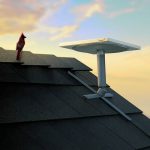Cross Party MPs Warn Risk to Life Still Exists with UK Digital Phone Switch

A new report from the Digital Communities All-Party Parliamentary Group (DC APPG) has been published, which examines the ongoing industry-led switchover from Openreach, BT and KCOM’s legacy phone lines to new digital (IP / VoIP based) networks. But it warns that, despite recent efforts, vulnerable users still face a “risk to life” from the switch.
Just to recap. The big switch-off was recently delayed to 31st January 2027 in order to give broadband ISPs, phone, telecare providers, councils and consumers more time to adapt (details). But the main focus of this delay was the 1.8 million UK people who use vital home telecare systems in the UK (e.g. elderly, disabled, and vulnerable people), which aren’t always compatible with digital phone services. Take note that for everybody else, the switching deadline is still technically Dec 2025.
The industry-led shift to digital phones is being driven by two major changes, including the looming retirement of copper lines in favour of full fibre (FTTP) broadband (inc. future exchange closures) and the fact that reliability of the old network is in decline (i.e. it’s becoming harder for operators to source parts and skills for older technologies). Not to mention that it is not economically feasible to maintain both the old and new networks long term.
Advertisement
Both the past and present governments have already responded to these concerns by encouraging the industry to adopt various changes (here and here), such as by ensuring that no vulnerable customers are migrated by the major providers (e.g. BT, Virgin Media, Vodafone and Sky Broadband) until their telecare systems have been confirmed to work with the new digital phone service.
In addition, many of those same providers have also recently introduced enhanced battery backup solutions, which can help to provide additional protection to vulnerable users during protracted power cuts (here). Not to mention that BT and Openreach are currently also working toward launching their Pre-Digital Phone Line (PDPL) product this year (aka – SOTAP for Analogue).
The PDPL essentially attempts to replicate how the old phone service worked, albeit over a more modern network (i.e. it does NOT require a broadband connection to function or require battery backup). But PDPL is only a temporary solution until 2030 (i.e. when mass exchange retirement starts), and it will only be available to vulnerable and edge use cases (inc. CNI) users on existing lines (not new customers) who would otherwise “face challenges” in migrating to IP based voice solutions by the deadline. But there is a catch as “PDPL is not compatible with lines connected to broadband“ (i.e. it’s for voice-only lines).
Findings of the DC APPG report
However, despite all of the above efforts, the new DC APPG report – ‘Care to Connect‘ – finds that the current industry-led approach has created a “complex landscape in what is a technical project with deeply personal repercussions“, while highlighting the previously covered deaths of two “vulnerable” Virgin Media Phone customers (here) – this is partly what led to the government putting more pressure on the industry over the past year.
Advertisement
The group is now calling for the role of government “to be clearly defined in digital transformation projects” and has made various other recommendations (see bottom of article), such as calling for Ofcom to require longer-lasting battery backup within broadband and mobile networks (e.g. 6 hours instead of 4 for “newly installed” street cabinets).
The report also supports the plan for a national awareness campaign (National Telecare Campaign), although it fears that “industry fragmentation has the potential to undermine the delivery of an effective NTC“. Witness evidence is said to have highlighted the critical need for “buy-in and support from the voluntary and community sector (VCS)” to deliver an effective communication campaign.
Concern was also raised about the overreliance of residents to self-identify as ‘vulnerable’ throughout the PSTN migration. Further evidence raised the potential risk of an increase in scam activity (i.e. fraudsters using the switchover to pressuring customers into parting with financial details etc.), and there is growing concern that this may worsen as a result of the national campaign.
Helen Morgan MP (North Shropshire), Chair of the APPG, said:
“The APPG agreed to fast track an inquiry into the PSTN migration and shine a light on the risks associated.
The digital switchover should be known and understood by every resident across the country to ensure the most vulnerable in our communities are protected.
Successive governments have not provided leadership or coordination to this programme, and it is now time for this new government to correct course. The risk to life if residents are not safely migrated is real. A digital transformation project of this kind cannot be allowed to be led by industry operatives alone.
Unfortunately, whilst a national campaign is essential, DSIT must urgently intervene to ensure coordination and provide clarity to the wider network of stakeholders. This will ensure the campaign has a strong ground-up approach to complement TV and radio adverts.”
The report makes a lot of fair points and recommendations, although it should be said that Ofcom, broadband ISPs and the government are already in the process of delivering on some of the areas they touch upon. In other cases, such as in terms of battery backup for street cabinets, the regulator has already softened its stance due to the costs involved (here), although it is still considering options for mobile networks (here). But ISPs have also been improving the customer side of things with better protection for homes (here).
Advertisement
Elsewhere, we’re not completely convinced that the complex and highly technical project would have been better managed if it was centrally controlled by the government (MPs haven’t exactly proven themselves to be terribly competent when it comes to modern telecoms networks), although much would depend upon the structure. In any case, this is more of a consideration for future projects than the PSTN switch-off.
We’ve summarised the report’s main recommendations below, although we recommend reading the report itself in order to get the full context. But one of the main problems with this report is that it comes far too late in the process, near the end of what started being planned around a decade ago.
Recommendations
National government
• The PSTN Charter should be updated to include the agreed supported journeys definition during the PSTN migration.
• The Department for Science, Innovation and Technology must set out how it monitors compliance with the PSTN Charter and the PSTN non-voluntary migration checklist.
• The Department for Science, Innovation and Technology must set out how it plans to enlist all CPs to both the PSTN Charter and the PSTN non-voluntary migration checklist.
• The Department for Health and Social Care (DHSC), working with the TSA, must take every reasonable step to end the sale of analogue-enabled telecare devices.
• The Department for Science, Innovation and Technology should deliver ringfenced funding that enables combined authorities/strategic authorities to improve capacity and capability of dedicated digital teams to coordinate and deliver digital transformation and adoption.
• Future digital transformation projects should be coordinated centrally by national government, leveraging local and regional government and industry representatives.
• A ministerial statement must be heard in Parliament ahead of the launch of the national telecare campaign to support awareness raising.
Local government
• Local authorities and housing associations should sign DSAs with all relevant communication providers, regardless of where they are at with the digital switchover.
• Local authorities should perform an audit of the technology they own to understand what might be impacted by the digital switchover.
Businesses
• Businesses should perform an audit of the technology they own to understand what might be impacted by the digital switchover.
Power and battery back-up solutions
• Ofcom, Ofgem and the Government should continue discussions on power back-up solutions. As a first step, Ofcom should update its guidance on resilience solution in the home during a power cut for customers reliant on their landline to call emergency services and to increase this from one hour to at least four hours.
• Ofcom should update its guidance to increase the minimum requirement for power back-up solutions from four hours to at least six hours for equipment in newly installed cabinets of fixed networks.
• Where battery back-ups are used as power solutions in the event of an outage, the battery back-up deployed should run for at least six hours.
• Resolving the issue of power back-up solutions should be a joint undertaking between energy and communication providers, with oversight from Ofgem and Ofcom.
• The APPG supports the creation of a multi-sector priority service register covering energy and communications.
• CPs performing the PSTN migration must undertake an audit with residents to understand what alternative means of communication they have in the event of a power outage and inform them of the support that is available to them, embedding Ofcom’s guidance as standard practice.
Telecare sector
• All telecare service providers and suppliers, including private providers and suppliers, must be certified to TEC Quality’s Quality Standards Framework to reach the highest standards on their digital switchover procedures.
2/3G sunsetting
• Data gathered on ‘vulnerable’ people through DSAs should be shared with mobile network operators (MNOs) as 2G and 3G sunsetting progresses. If this is not possible, the London Office for Technology and Innovation (LOTI) and the LGA should recreate a universal DSA for MNOs to use.
• CPs should be actively informing consumers about 2G and 3G sunsetting when performing PSTN migrations.
• Audits should be conducted by local authorities and businesses to understand what technology is owned that might be impacted by 2G and 3G sunsetting.
Mark is a professional technology writer, IT consultant and computer engineer from Dorset (England), he also founded ISPreview in 1999 and enjoys analysing the latest telecoms and broadband developments. Find me on X (Twitter), Mastodon, Facebook, BlueSky, Threads.net and Linkedin.
« ASA Ban EE UK Broadband Ads for Misleading Wi-Fi 7 Router Claims UPDATE
O2 UK and Ontix Expand 4G Mobile Small Cells into Plymouth »























































What do people moving to fibre only areas like new builds do?
Connect via the FTTP hosted service.
Have telecare services that are compatible with the new systems, it’s telecare services that have been dragging their heels upgrading existing customers (i.e. not wanting to spend the money).
the newer telecare devices use a mobile service rather than a landline. neighbour had one a year or so back and she is on digital voice also
or indeed anyone who moves houses or moves ISPs in many cases. The BT Group brands will want all new customers on digital voice or go broadband only, even if they already have WLR.
Nothing to stop LLU firms supplying analogue services in areas where the copper stop sell or exchange closure has not yet taken place, though would they really want to?
Moving to a fibre only area is easy since you’re moving and there’s an expectation that new services will be required. The issue is legacy equipment in non-fibre areas, where it may require a “two step” upgrade to move to VDSL and then fibre, or possibly worse moving to a non-fibre area where new equipment is required but will also require replacement in the near future when fibre becomes available.
Frankly this whole nonsense of forcing customers to do voice over VDSL could have been avoided if they had accepted that the PSTN would be needed by customers until replaced by fibre. That might have both prompted a quicker rollout of fibre and avoided an extra pointless upgrade step that required almost new equipment to be thrown away.
What equipment is being thrown away? The major ISPs issue the same router to both VDSL and FTTP customers. Just swap the cables and off you go.
(to avoid the pedants – some ISPs have an FTTP specific model, but all VDSL capable units can also handle FTTP)
What do you think will be thrown away? VoIP doesn’t care what the transmission medium is, which is rather the point of the OSI layers. If something works over VDSL it will work over FTTP.
“Frankly this whole nonsense of forcing customers to do voice over VDSL could have been avoided if they had accepted that the PSTN would be needed by customers until replaced by fibre.”
Yes, keeping the vulnerable customers even longer on legacy, end of support exchanges, with lack of spares and expertise to repair sounds like a great plan. And of course would just mean that the careline providers could sit on their hands for a bit longer, hoping it all goes away.
There should be a specific requirement placed on all care providers to ensure that they handle the migration of their customers. As it stands, the proposals all dance around the matter rather than provide an effective process.
As someone who’s dealt with this from the care provider side of things, the telecoms companies have created this problem. You have landline only pensioners without broadband that have alert systems, you also have pensioners with broadband but using VDSL.
Do you upgrade them to VDSL IP based solutions today at great expense (remember mobile coverage alone is not enough) knowing you’re going to have to upgrade them again when either the PSTN is turned off or they switch their broadband to fibre, or do you wait until it’s needed. Remember they have to pay and often they can’t afford it even if you try and push them. Especially when you have to warn them that the “new” VDSL equipment will be obsolete within a year or two when fibre becomes available.
No, ignoring the change that was coming for the last decade or so by the care kit providers has done this.
I’m befuddled by your ‘upgrade twice’ comment. What do you think is going to happen?
@Blue Shirt Guy:
That is simply nonsense. The Care Providers have failed to respond to the CSPs as the latter have communicated and simply not taken the responsibility for their clients. An obligation must be placed on Care Providers to take responsibility for the clients.
What gets me with the switch over to digital is the so-called battery back up. Now what happens if a total blackout happens, it last more than an hour or in some cases 24 hours, because these battery backups that BT etc is supposed to give out lasts between 1 – hour and 7 hours. How does people suppose to get emergency services as the blackout lasts more than 7 hours. Mobile companies have said no to generated backup of their mobile sites, so what happens if a person is having a heart attack, and they can’t contact emergency services or family to get help.
Some of the newer backup units have a “reserve” feature that will keep some charge until you press a button to make an emergency call. Of course this has the issue that you can’t phone that person and warn them of an impending flood etc until after they realise they need help.
The sounds like a power company problem. Do you expect the makers of your freezer and gas boiler to also ensure it keeps working when tbere’s no power?
This is making a mountain out of a molehill, my 86 year old grandmother has a mobile phone and can use it easily
Admittedly it’s a very basic phone with little in terms of features but she doesn’t want that either
So what happens when the power and mobile networks go off (given it’s been revealed many mobile masts have no backup so the two occurring at the same time is highly likely) if they have no backup battery for their landline? Mobile phones have nothing to do with this other than as an extra backup connection.
Ultimately what choices are there? Power over copper was a great side effect of PSTN, but no country is considering running 1000s of extra exchanges (fibre only needs 1000 of the current 5500 exchange) and millions of copper lines only for power backup purposes. With battery units in homes and more cell sites with powered backup, we get close to solving the problem. Back in the early 1980s if your local exchange failed – fire, power failure impacting the generator etc, then there as also no phone service and no mobile alternative. These days we have new options, and not so far away is going to be normal handsets getting at least emergency calling from satellites to add to the list perhaps? It would help if people knew that going outside increased your chance of reaching a more distant working cell site for that emergency call – and any working cell site will connect your 999 call, no matter what your provider.
Your family should count their blessings. You’ve obviously not needed to deal with a relative of friend with any neurological degradation or dementia. When people can no longer use the memory list on a basic DECT phone or understand how the TV remote needs to first select ‘live TV’ before choosing the channel, understanding that when the phone won’t work when they wake up in the dark because there’s been a power cut will be beyond most. Throw in knowing they need to consider an ONT and router needs to remain plugged in and be switched for their call pendant to summon help and you’ll understand why this is an issue.
Most people have managed to switch from circular dials with loop disconnect dialling to push button DTMF, so we could argue this is just another progression.
Maybe it will be ‘natural selection’ way or reducing an over populated planet. We’ll have to wait and see.
“The APPG agreed to fast track an inquiry into the PSTN migration and shine a light on the risks associated.”
This is a very timely action. This should have been completed 5 years ago.
“But PDPL is only a temporary solution until 2030 (i.e. when mass exchange retirement starts)”
So a new APPG inquiry can start around Q3 2029.
I understand the challenges, but I think it would be better handled at this time if we required all the affected telecare providers to migrate immediately and effectively, at no cost to the customer. Until we do this, they will keep using the old technologies for decades to come. It is already proven the softer approach failed.
THe risk is tiny less than the risk of you old line going down and they do go down
Exactly. Some years ago flooding knocked out the main cable coming from the exchange to our estate and we were without a phone for more than a week.
It’s a different risk though. The failure of *your* phone line versus the failure of everyone in the town’s phone line.
Those two things present different hazards.
FTTP fails also, can take a month to fix, and during that time there can also be mobile mast power outages. Then the intermittent FTTP faults (LOS red) taking it down for a day or two require it still to be down when Openreach turn up, or the problem is simply dismissed.
The risk of an FTTP line going down and the mobile service and the battery back up going down and at the same time needing to make an emergency call is close to zero
Actually it increases as elapsed tine from the incident start increments. If the failure affects a community rather than an individual the probability of someone needing to call 999 approaches 1. Disabled folk or poorly folk who need electricity to operate their movement aids or medical equipment become trapped, immobile or unwell if power is unavailable for more than a few hours.
That’s why power companies should be on the hook to restore power more quickly.